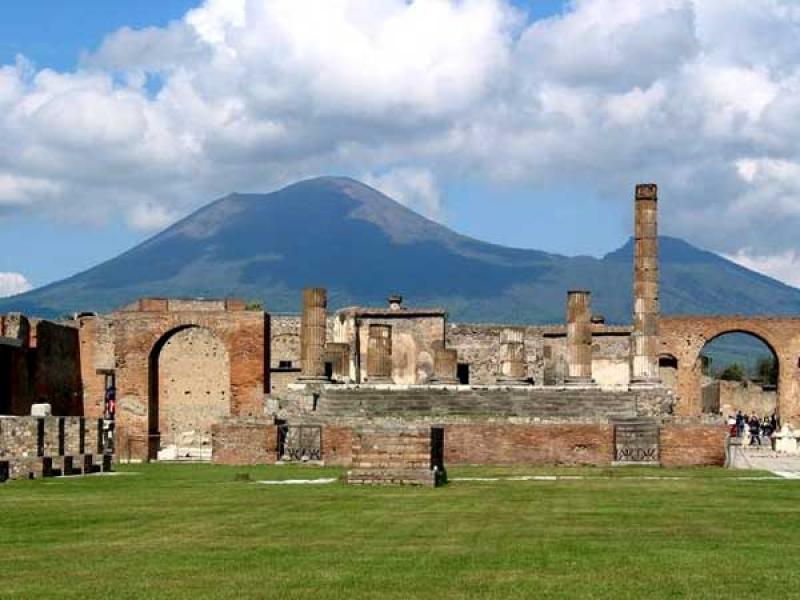
Ruins of Pompeii
By Laura Blake
A haunting reminder of the unrelenting power of the natural world, the ancient Ruins of Pompeii remains one of Europe’s best archaeological sites and one of Italy’s most visited tourist attractions. In the early hours of 24 August, 79 AD, after years of inactivity, Mount Vesuvius awoke with a vengeance and burning pumice stone and ash rained down upon the city. The citizens, caught horribly unaware, could do little to escape their tragic fate.
On that fateful day, around 3,000 of the town’s population perished. Incredibly, when archaeologists began to excavate the city from the 18th Century onwards, they found the remains of perfectly preserved citizens – many clearly displaying their anguish and terror – that had been protected for over 2000 years by the thick layer of ash that had ultimately killed them. The buildings too, buried beneath the lapilli (burning pumice stone) had been frozen in time.
For those that seek an insight to the daily life of a once thriving Roman community, the ruins of Pompeii are priceless and unrivalled. Explore the stark, winding roads of this former vibrant port side city for an unprecedented opportunity to see how the people lived – and how they died.
If you wish to explore Pompeii in great depth, it would be necessary to set aside at least three or four hours. The main entrance at Porta Marina will lead you directly to one of the greatest structures of the Roman Age, the Temple of Venus. Following on from the spectacular temple, the main piazza will open visitors’ eyes to the former glory of Pompeii; in the House of the Vettii, visitors will find many breathtaking frescoes, whilst the Temple of Apollo sighs with the stories of old – confirmed to be amongst the city’s oldest buildings, the artefacts found inside dated back to 575 BC.
Before the city fell victim to destruction, a 20,000 seat amphitheatre stood proudly at the heart of Pompeii. Built around 70 AD, the theatre would have once been hailed as the hub of cultural activity; all forms of entertainment, ranging from lively comedies, eloquent tragedies and sporting events would have been held here, but now this magnificent structure sits silently. A testimony to the ingenious skills of the Roman architects, coupled with its spectacular preservation, this building represents the oldest surviving amphitheatre in the world.
The site is littered with hundreds of artefacts; ranging from stone statues to glistening gold plates, these fascinating objects lie where they fell when the ash cloud engulfed the city, highlighting just how little time the citizens had to make their escape. Forever preserved in time, the city of Pompeii will also forever capture the imagination.
Share this article:




















